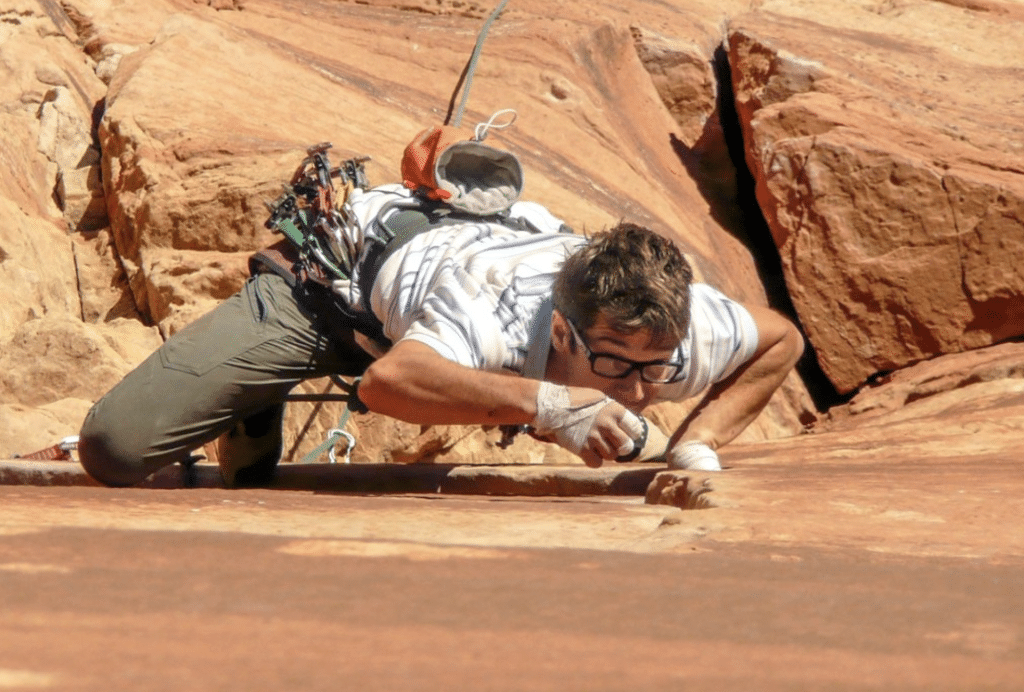Selecting the appropriate climbing gear is a crucial aspect of your climbing experience, as it directly impacts your safety, efficiency, and overall comfort. This blog post will guide you through the essential factors to consider when choosing the right climbing equipment, ensuring that you can make informed decisions tailored to your specific needs and preferences.
Types of Climbing
Before diving into the details of individual gear items, it’s important to understand the different types of climbing and their respective requirements. Your gear choices will depend on the climbing discipline you plan to engage in.
- Indoor Climbing – Indoor climbing gyms offer a controlled environment for climbers, focusing on harnesses, shoes, chalk bags, and belay devices. These items are essential to indoor climbing, and you should ensure that you invest in high-quality gear specific to this discipline.
- Sport Climbing – Characterized by pre-placed bolts on routes, requiring quickdraws, a dynamic rope, and specialized shoes for optimal performance. The emphasis in sport climbing is on movement and technique, so gear that allows for agility and precision is vital.
- Traditional Climbing – Traditional climbing, or “trad” climbing, involves placing your protection (cams, nuts, hexes, etc.) as you ascend the rock face. Gear for trad climbing is more extensive and specialized than for sport climbing, with a focus on a wide range of protection devices and a durable, comfortable harness with ample gear loops.
- Bouldering – A form of climbing that focuses on short, powerful movements on boulders or small rock faces. Bouldering-specific shoes, crash pads, and chalk bags are essential for this type of climbing, as they cater to the unique demands of bouldering.
- Ice Climbing – Ice climbing requires specialized equipment designed to handle the challenges of cold, icy environments. Crampons, ice tools, ice screws, and mountaineering boots are some of the key items needed for this discipline.
Personal Experience and Skill Level
Your climbing experience and skill level play a significant role in determining the right gear for you. Beginners should prioritize gear that offers simplicity, durability, and affordability, while more advanced climbers may opt for specialized, high-performance equipment. Always ensure that you are comfortable and competent using your gear before venturing out on a climb.
Budget
Climbing gear can be expensive, so it’s essential to balance quality and affordability when making your choices. As a general rule, prioritize items that directly impact your safety, such as harnesses, ropes, and protection devices. You can gradually upgrade other items, like shoes and helmets, as your skills and budget allow.
Climbing Gear Essentials
When assembling your climbing equipment, several key items are indispensable for a successful and safe climbing experience.
Harness
The harness is your primary connection to the rope and an essential piece of climbing gear. Look for a harness that offers comfort, adjustability, and enough gear loops to accommodate your specific climbing style.
Climbing Shoes
Selecting the right climbing shoes is critical, as they influence your performance on the rock. Consider factors such as fit, performance, and the type of climbing you’ll be doing when making your choice.
Belay Device and Carabiners
Belay devices come in various styles, including tube-style, assisted-braking, and auto-locking devices. Match your device to your experience level and intended climbing type. Carabiners are also important, with options like locking and non-locking, various shapes, and gate types to choose from.
Ropes
Dynamic ropes are the standard for climbing, with factors like diameter, length, and dry treatment influencing your choice. Thinner ropes are lighter and more supple, while thicker ropes are more durable and suitable for beginners.
Helmet
An essential safety component of your climbing gear. When selecting a helmet, consider comfort, weight, ventilation, and adjustability to ensure it fits properly and provides adequate protection during your climb.
Protection
The type of protection you choose depends on the climbing style and specific route. Cams, nuts, hexes, and slings are all common protection devices, with each serving a particular purpose. Familiarize yourself with the different protection types and choose based on your intended climbing environment.
Sizing and Fit
Proper sizing and fit of your climbing gear are crucial for safety and performance. When trying on gear, prioritize comfort and functionality. Remember that climbing shoes should fit snugly but not painfully, and harnesses should be secure without restricting movement.
Brand Reputation and Product Reviews
Researching brands and reading product reviews is an important step in selecting your climbing equipment. Always read reviews and seek recommendations from experienced climbers to ensure you’re purchasing reliable gear.
Environmental Considerations
The environment you plan to climb in will also influence your gear choices. Factors such as temperature, rock type, and weather conditions may require specific gear adaptations. For example, you may need to invest in insulated clothing and gloves for colder climates, or specialized shoes for slippery rock surfaces.
Selecting the right climbing gear is a vital part of your climbing journey. By considering factors such as climbing type, personal experience, budget, and environmental conditions, you can make informed decisions that ensure your safety, comfort, and enjoyment on the rock. Investing time and research in choosing the best gear for your needs will undoubtedly pay off in the long run, allowing you to focus on the thrill of the climb.
